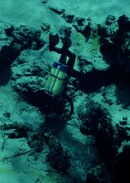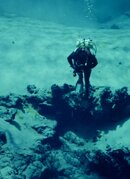captain
Contributor
Before BC's, on dives with thick rubber I would wear an inflatable flotation vest ( now called a snorkle vest) and if I was heavy on the bottom blow a little air in it. Being they didn't have dump valves to vent on the way up I would vent it thought the oral inflation tube while still on the bottom before beginning the ascent.





